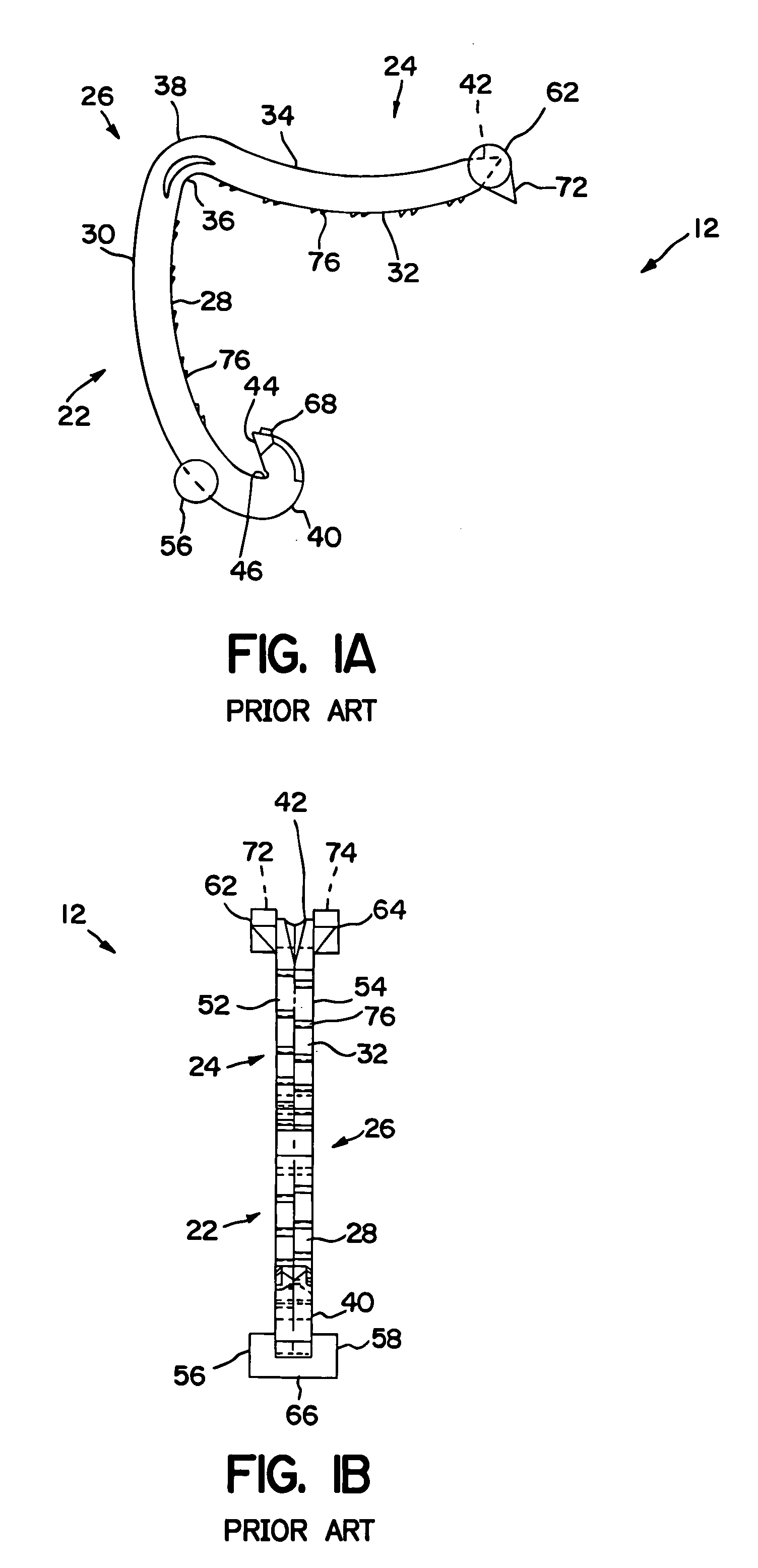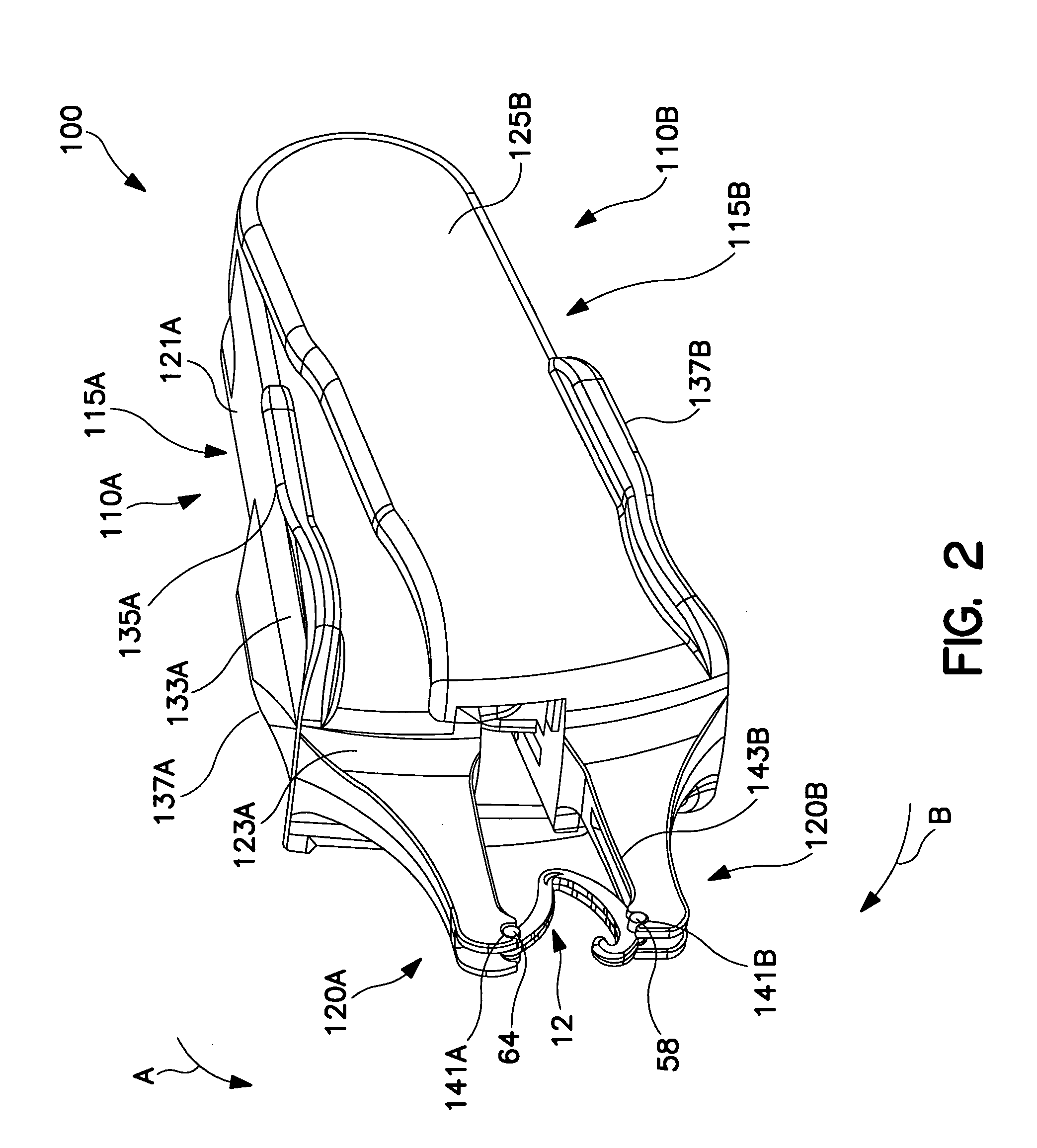Fingertip-actuated surgical clip applier and related methods
a technology of fingertip and surgical clip, which is applied in the field of surgical clip application instruments, can solve the problems of metallic clips interfering with imaging techniques, time-consuming and difficult to perform complex manipulations, and the use of surgical thread for ligation requires complex needle manipulations, etc., and achieves the effects of less force, simple structure and small siz
- Summary
- Abstract
- Description
- Claims
- Application Information
AI Technical Summary
Benefits of technology
Problems solved by technology
Method used
Image
Examples
Embodiment Construction
[0054]The clip applier of the present invention as described in detail below is particularly designed for use in manipulating a polymeric, asymmetric clip that is movable into a closed, latched state when clamped onto tissue. An example of this type of clip, generally designated 12, is illustrated in FIGS. 1A and 1B. Clip 12 preferably comprises a one-piece integral polymeric body formed from a suitable strong, biocompatible engineering plastic such as the type commonly used for surgical implants. Examples include polyethylene terephthalate (PET), polybutylene terephthalate (PBT), polyoxymethylene, or other thermoplastic materials having similar properties that can be injection-molded, extruded or otherwise processed into like articles.
[0055]The body of clip 12 comprises a first or outer leg, generally designated 22, and a second or inner leg, generally designated 24. First and second legs 22 and 24 are joined at their proximal ends by an integral hinge or heel section, generally de...
PUM
 Login to View More
Login to View More Abstract
Description
Claims
Application Information
 Login to View More
Login to View More - R&D
- Intellectual Property
- Life Sciences
- Materials
- Tech Scout
- Unparalleled Data Quality
- Higher Quality Content
- 60% Fewer Hallucinations
Browse by: Latest US Patents, China's latest patents, Technical Efficacy Thesaurus, Application Domain, Technology Topic, Popular Technical Reports.
© 2025 PatSnap. All rights reserved.Legal|Privacy policy|Modern Slavery Act Transparency Statement|Sitemap|About US| Contact US: help@patsnap.com



